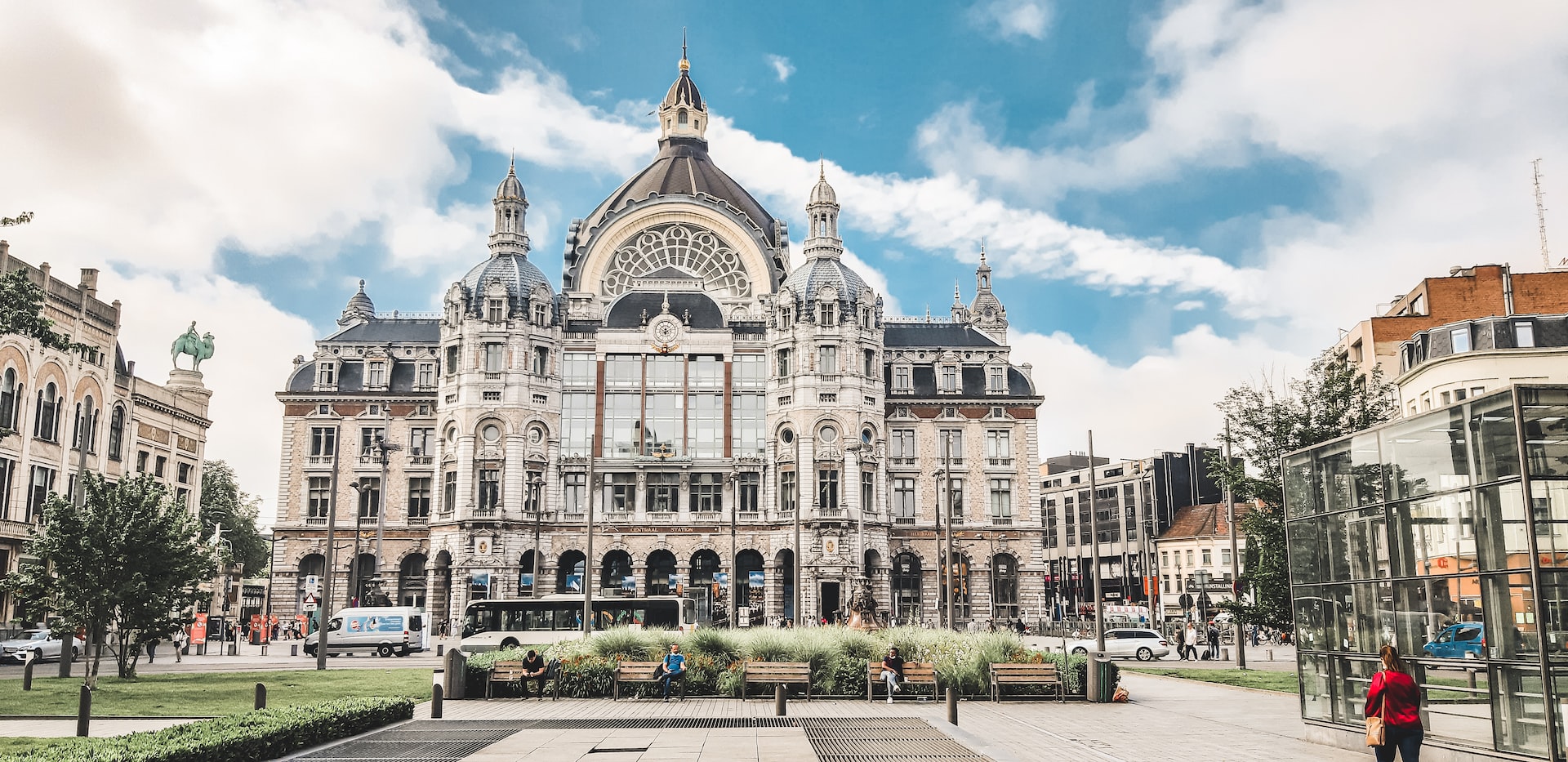by Ioana Gherghel
15.12.22

I’m on a quiet row of terraced art-deco buildings with an institutional air. As I ring the bell to a slim, imposing black door, I notice the small sign next to it that says “El Cider” in simple Italic white font, on a black acrylic plaque. Soon I hear a distant thud. I glance along the narrow street up to the nearby junction, where four castellated buildings converge conspiratorially.
I am picking up an order of apple cider from what can only be called an unusual supplier. I did not know it at the time, but I was in Zurenborg, the “Golden Triangle of Art Nouveau”. The door opens and a young woman greets me in crystal clear English, with only a slight Germanic inflection. She is barefoot and hands me the cider with a smile. Behind her stacks of boxes and bottles tower to the double height ceiling of the hallway, crowding the landing of an ornate staircase that looks lifted from Horta’s Hotel Tassel.
As I step back out into the street the miniature castles at the junction only serve to heighten the sense of surrealism of the whole scene. These stout crenellated buildings are reminiscent of the mediaeval fortress Het Steen (The Stone), reminding me that I am in Antwerp.
The famous fortress still stands in the old town, watching over the comings and goings along the river Scheldt. A large tidal river, the Scheldt is the beating pulse of the port city of Antwerp. However, nowadays the life of the city has turned its back on it: the riverbank is overwhelmed by hangars, parking lots, and flood defences.The Het Steen fortress stands orphaned, flanked by car parking that stretches into the horizon, stranded by a busy boulevard, and as I walk along the bank I am reminded of the waterfront in Southampton.

The connection between Antwerp and the British Isles goes back centuries. The mouth of the river Scheldt directly faces the mouth of the river Thames, their kiss sealed by the English Wool trade in the Middle Ages. In its Golden Age Antwerp was a trade metropolis on a par with Venice, connected to Jerusalem, and later the European gateway to the Americas. This made it the European homologue of Britain’s Southampton; in fact, shortly after the establishment of the Red Star Line that operated between Antwerp and New York, Southampton was even added as the single calling point on the route.
The similarities between Antwerp and Southampton are not coincidental. Mediaeval port cities have been facing a tough challenge: they grew around maritime operations, but as they expanded, so did their ports. Most often the scale of maritime infrastructure requires it to be moved, leaving behind an empty industrial landscape at the heart of the city, or remain in place, and obliterate the waterfront. In Southampton maritime operations remained in place but kept sprawling, separating the city from the waterfront. In Antwerp all infrastructure was moved into a large port area to the north of the city, leaving behind a riverside wasteland - the effect is not dissimilar.

Walking along the river Scheldt from Het Steen fortress I arrive at a rusty ferris wheel. It sits at the end of an elevated viewing deck that indicates an attempt at rejuvenation and reconnection with the city. The Cathedral of Our Lady rises impressively to the sky only a couple of blocks away, its Gothic tower shooting up as elegantly as a mediaeval Festival of Britain’s Skylon.
I am trying to make my way to Antwerp-Centraal train station, on the other side of the old town. Only in the Town Hall square does the majestic presence of the Cathedral spire fade in the background, replaced by the exquisite details of the Gothic guild houses' facades glinting in the afternoon light. In the old town loud trafficked boulevards are juxtaposed with charming pedestrianised alleyways crowded with tables and chairs, umbrellas, planters and menus. Tourists prong these streets, watched over by old crooked Gothic buildings huddling in undulating rows, leaning in as if to share in the gossip.
Immediately south of the Cathedral a large traffic artery leads towards the tall Boerentoren, an Art-Deco tower that since the 1930s helpfully stands at the western end of the historic Meir street, now pedestrianised. The Meir is a pleasant but characterless place, with the unfortunate atmosphere of an airport duty-free, lined with international luxury brands. Persevering along it is nevertheless rewarded when, after its last bend, the Antwerp Central Station comes into view. Dubbed the “Railway Cathedral”, the beautiful waiting room dome floats impressively above the trees and clutter of the street and gracefully bookends the boulevard.
The long view frames the station along the Meir and over a huge, confusing junction with the inner city ring road known as the Antwerpen Opera. Here pedestrians, cyclists, trams, buses and cars all share the same surfaces, and follow no rules. Where now there is chaos, before there was military order: the inner ring road curves along what used to be Antwerp’s fortifications, built at a time of Catholic conquest that brought religious oppression and the end of the Golden Age of a great city.
In its own disjointed way, the route connecting the waterfront to the railway station articulates a patchwork of Antwerp’s history and character. Over the centuries the railway took over a lot of the functions that the port used to perform, but the station and the waterfront continue to relate and contain between them the unique story of glory, oppression, tolerance, openness and experimentation in Antwerp.
Ioana travelled to Antwerp to present her paper at the Urban History conference organised by the University of Antwerp (EAUH 2022).
